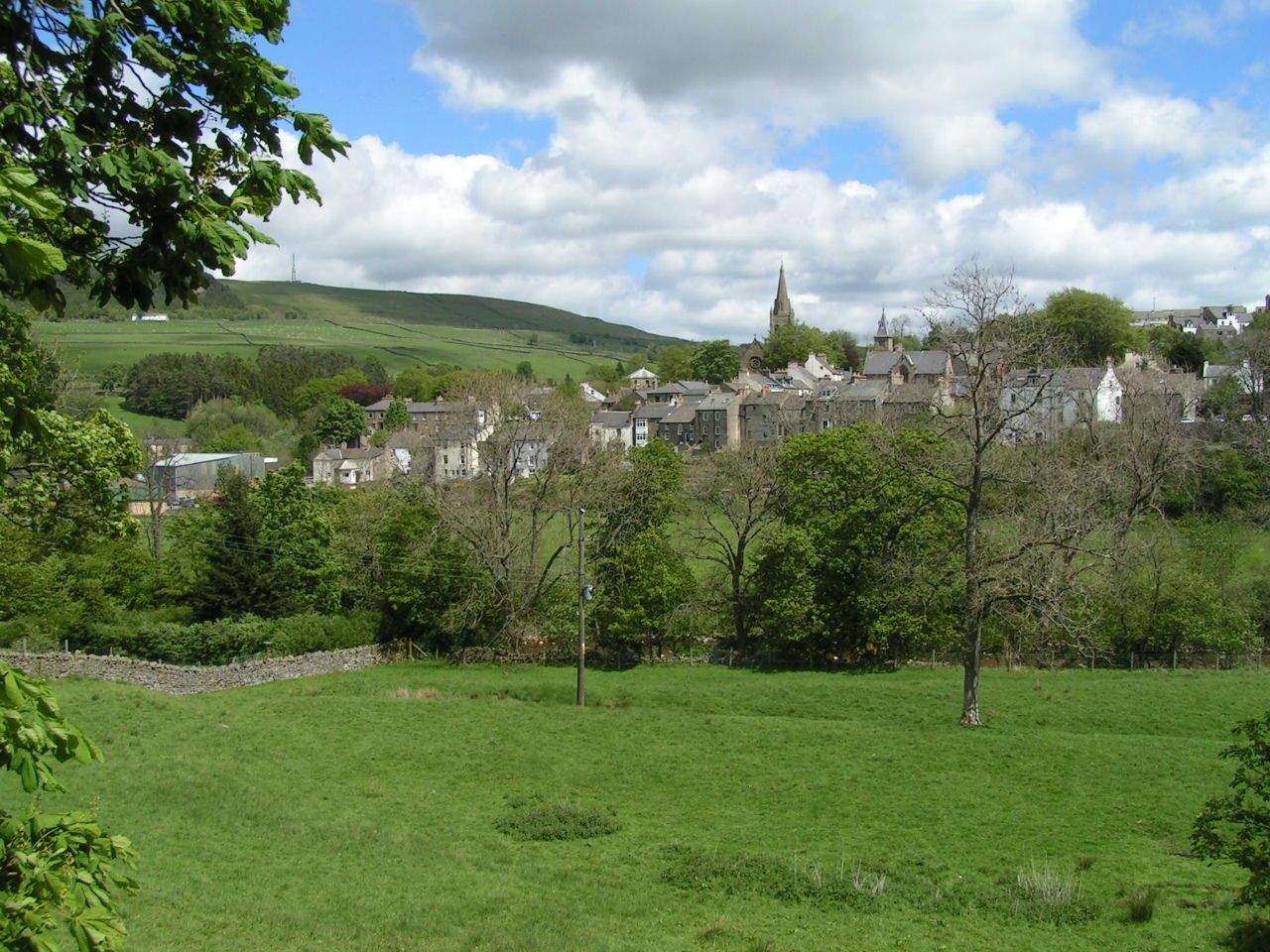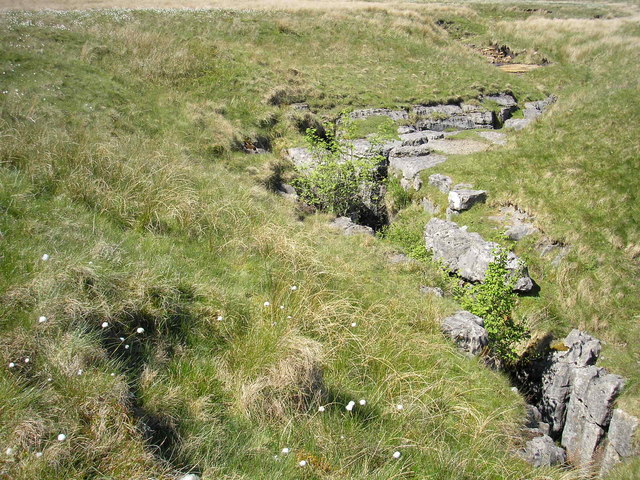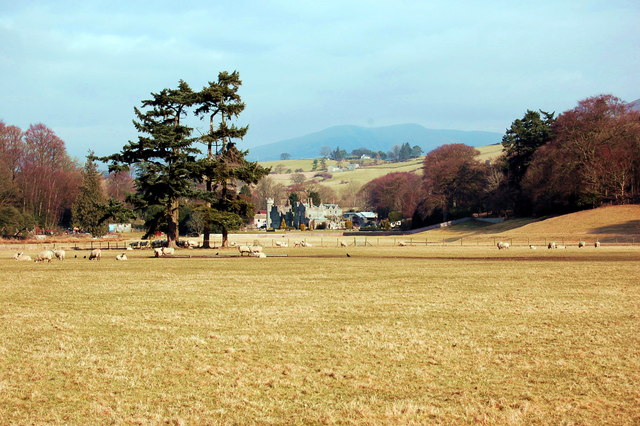|
Pennine Journey
Pennine Journey is a circular trail that starts and ends in Settle, North Yorkshire, England. The route is based on a walk taken by Alfred Wainwright in 1938 and described by him in a book published in 1986. From Settle, the route heads north through North Yorkshire, County Durham and Northumberland to Hadrian's Wall, then extending along the wall for , before turning south through Cumbria to head back to the starting point. Route The route begins (and ends) in Settle, North Yorkshire, heading north along the eastern edge of the Pennines, over Penyghent where the trail meets the Pennine Way. The path continues past Askrigg to Tan Hill (where it enters the North Pennines AONB), Bowes and Tees High Force to Hexham. After Hexham it turns westwards along of Hadrian's Wall, before heading south at Greenhead to Alston, Appleby, Kirkby Stephen, and Garsdale. It then turns westwards through Grisedale and across the northern edge of Baugh Fell to Sedbergh, before heading south o ... [...More Info...] [...Related Items...] OR: [Wikipedia] [Google] [Baidu] |
North Yorkshire
North Yorkshire is the largest ceremonial counties of England, ceremonial county (lieutenancy area) in England, covering an area of . Around 40% of the county is covered by National parks of the United Kingdom, national parks, including most of the Yorkshire Dales and the North York Moors. It is one of four counties in England to hold the name Yorkshire; the three other counties are the East Riding of Yorkshire, South Yorkshire and West Yorkshire. North Yorkshire may also refer to a non-metropolitan county, which covers most of the ceremonial county's area () and population (a mid-2016 estimate by the Office for National Statistics, ONS of 602,300), and is administered by North Yorkshire County Council. The non-metropolitan county does not include four areas of the ceremonial county: the City of York, Middlesbrough, Redcar and Cleveland and the southern part of the Borough of Stockton-on-Tees, which are all administered by Unitary authorities of England, unitary authorities. ... [...More Info...] [...Related Items...] OR: [Wikipedia] [Google] [Baidu] |
Alston, Cumbria
Alston is a town in Cumbria, England, within the civil parish of Alston Moor on the River South Tyne. It shares the title of the 'highest market town in England', at about above sea level, with Buxton, Derbyshire. Despite its altitude, the town is easily accessible via the many roads which link the town to Weardale, Teesdale, and towns in Cumbria such as Penrith via Hartside Pass, as well as Tynedale. Historically part of Cumberland, Alston lies within the North Pennines, a designated Area of Outstanding Natural Beauty. Much of the town centre is a designated Conservation Area which includes several listed buildings. Geography Alston lies within the North Pennines Area of Outstanding Natural Beauty, more than by road from the nearest town, Haltwhistle, and is surrounded by moorland. Nearby villages include Garrigill and Nenthead. It is around west of Newcastle upon Tyne, south east of Carlisle, north east of Penrith, and south west of Hexham. Situated at the crossroads/j ... [...More Info...] [...Related Items...] OR: [Wikipedia] [Google] [Baidu] |
Westgate, County Durham
Westgate is a village in County Durham, in North East England. It is situated in Weardale between St John's Chapel and Eastgate. In the 2001 census Westgate had a population of 298. Westgate is also the entrance to Slitt wood and an old abandoned lead mine. Other features of the village include a caravan site and a football and basketball court. Westgate Castle was a peel tower-cum-hunting lodge, probably built in the 14th century, and forming the western gatehouse (hence the name) of Stanhope Deer Park owned by the Bishop of Durham. In 1442 the building was granted to Lord Lumley and used for forest courts and administration, but later served as a residence. By 1647 the 'castle' had become ruinous and was 'now demolished' although the 'crumbling walls of an old castle at Westgate' are mentioned in 1791. There is a Primitive Methodist chapel built 1871 and incorporating an earlier chapel built in 1824. The Anglican parish church of St Andrew was built in 1864 by Robert J ... [...More Info...] [...Related Items...] OR: [Wikipedia] [Google] [Baidu] |
Middleton-in-Teesdale
Middleton-in-Teesdale is a market town in County Durham (district), County Durham, in England. It is situated on the north side of Teesdale between Eggleston and Newbiggin, Teesdale, Newbiggin, a few miles to the north-west of Barnard Castle. The settlement is surrounded by the North Pennines Area of Outstanding Natural Beauty (AONB). Administration Middleton is administered by County Durham, Durham County Council. It is part of the Bishop Auckland (UK Parliament constituency), Bishop Auckland parliamentary constituency in the House of Commons. Prior to Brexit in 2020, it was a part of the North East England (European Parliament constituency), North East England constituency for the European Parliament. The local police force is Durham Constabulary. History The small market town in Upper Teesdale expanded in the early 19th century when the London Lead Company moved its northern headquarters there from Blanchland in Northumberland. Much of the architecture from its days as a com ... [...More Info...] [...Related Items...] OR: [Wikipedia] [Google] [Baidu] |
Gunnerside
Gunnerside is a village in the Richmondshire district of North Yorkshire, England. It is situated on the B6270 road, east of Muker and west of Grinton. The village lies between the River Swale and its tributary, Gunnerside Beck, in the Swaledale part of the Yorkshire Dales National Park. History The name of the village derives from an Old Norse personal name ''Gunnar'' and ''sætr'' meaning hill or pasture. Gunnerside Ghyll (or Gunnerside Gill), a smaller valley running northwards, at right angles to the Swale valley (Swaledale), was the site of a major lead mining industry in Swaledale until the late nineteenth century. The beck that runs through the narrow valley, also called Gunnerside Gill, or Gunnerside Beck, rises between Rogan's Seat and Water Crag, and runs for emptying into the River Swale at the site of Gunnerside New Bridge. The bridge carries the B6270 over the River Swale south of the village; it was rebuilt several times during the 19th century due to floodi ... [...More Info...] [...Related Items...] OR: [Wikipedia] [Google] [Baidu] |
Buckden, North Yorkshire
Buckden is a village and civil parish in the Craven district of North Yorkshire, England. Historically part of the West Riding of Yorkshire, Buckden is situated in the Yorkshire Dales National Park, and on the east bank of the River Wharfe in Wharfedale. The civil parish includes the hamlet of Cray and the whole of Langstrothdale. According to the 2011 Census the parish had a population of 187. History The etymology of the name derives from the Old English words of ''bucca'' and ''denu'' meaning ''he-goat'' and ''valley'' respectively. A bridge at Buckden was destroyed in a flood in 1748. A later and present bridge is known as 'Election Bridge', as a prospective MP made the promise of a replacement bridge an electoral pledge. On 5 July 2014, the Tour de France Stage 1 from Leeds to Harrogate passed through the village. Geography The village of Buckden is situated where Buckden Gill, which rises on Buckden Pike, joins the River Wharfe. Along the Gill is a disused lead mine, ... [...More Info...] [...Related Items...] OR: [Wikipedia] [Google] [Baidu] |
Ordnance Survey
, nativename_a = , nativename_r = , logo = Ordnance Survey 2015 Logo.svg , logo_width = 240px , logo_caption = , seal = , seal_width = , seal_caption = , picture = , picture_width = , picture_caption = , formed = , preceding1 = , dissolved = , superseding = , jurisdiction = Great BritainThe Ordnance Survey deals only with maps of Great Britain, and, to an extent, the Isle of Man, but not Northern Ireland, which has its own, separate government agency, the Ordnance Survey of Northern Ireland. , headquarters = Southampton, England, UK , region_code = GB , coordinates = , employees = 1,244 , budget = , minister1_name = , minister1_pfo = , chief1_name = Steve Blair , chief1_position = CEO , agency_type = , parent_agency = , child1_agency = , keydocument1 = , website = , footnotes = , map = , map_width = , map_caption = Ordnance Survey (OS) is the national mapping agency for Great Britain. The agency's name indicates its original military purpose (se ... [...More Info...] [...Related Items...] OR: [Wikipedia] [Google] [Baidu] |
Ingleton, North Yorkshire
Ingleton is a village and civil parish in the Craven district of North Yorkshire, England. The village is from Kendal and from Lancaster on the western side of the Pennines. It is from Settle. The River Doe and the River Twiss meet to form the source of the River Greta, a tributary of the River Lune. The village is on the A65 road and at the head of the A687. The B6255 takes the south bank of the River Doe to Ribblehead and Hawes. All that remains of the railway in the village is the landmark Ingleton Viaduct.OS map 98, Wensleydale and Upper Wharfdale. Arthur Conan Doyle was a regular visitor to the area and was married locally, as his mother lived at Masongill from 1882 to 1917 (see notable people). It has been claimed that there is evidence that the inspiration for the name Sherlock Holmes came from here. Whernside, north-north-east of the village, one of the Yorkshire Three Peaks, is the highest point in the parish at . There are major quarries within the paris ... [...More Info...] [...Related Items...] OR: [Wikipedia] [Google] [Baidu] |
Ingleborough
Ingleborough () is the second-highest mountain in the Yorkshire Dales, England. It is one of the Yorkshire Three Peaks (the other two being Whernside and Pen-y-ghent), and is frequently climbed as part of the Three Peaks walk. A large part of Ingleborough is designated as a Site of Special Scientific Interest and National Nature Reserve and is the home of a new joint project, Wild Ingleborough, with aims to improve the landscape for wildlife and people. Name The first element of the name "Ingleborough" has been variably explained as a Scots term for 'beacon, fire', an Old Danish term meaning 'English' or a derivative of Old English ''ing'', 'peak'. The second element is derived from the Old English word ''burh'', meaning "a fortified place"; in this case, a hill fort. The summit plateau of Ingleborough is encircled by the remains of a massive stone rampart, containing the foundations of Iron Age huts. Geography Ingleborough is in the south-western corner of the Yorkshi ... [...More Info...] [...Related Items...] OR: [Wikipedia] [Google] [Baidu] |
Whernside
Whernside is a mountain in the Yorkshire Dales in Northern England. It is the highest of the Yorkshire Three Peaks, the other two being Ingleborough and Pen-y-ghent. It is the highest point in the ceremonial county of North YorkshireMickle Fell in southern Teesdale is the highest point within the boundaries of the historic county of Yorkshire. and the historic West Riding of Yorkshire with the summit lying on the county boundary with Cumbria. It is the fifteenth most prominent hill in England. In shape Whernside forms a long ridge, running roughly north-north-east to south-south-west. The mountain is north west of Ingleton and north of Horton-in-Ribblesdale. Name The name, first recorded in 1208 as ''Querneside'', is of Old English origin. It is derived from ''cweorn'' 'quern' or 'millstone' and ''sīde'' 'hillside', so means "hillside where millstones are found". The name is of the same origin as Great Whernside, to the east, with which it is sometimes confused. Ro ... [...More Info...] [...Related Items...] OR: [Wikipedia] [Google] [Baidu] |
Sedbergh
Sedbergh ( or ) is a town and civil parish in Cumbria, England. The 2001 census gave the parish a population of 2,705, increasing at the 2011 census to 2,765. Historically in the West Riding of Yorkshire, it lies about east of Kendal, north of Lancaster and about north of Kirkby Lonsdale, just within the Yorkshire Dales National Park. It stands at the foot of Howgill Fells, on the north bank of the River Rawthey, which joins the River Lune below the town. Situation Sedbergh has a narrow main street lined with shops. From all angles, the hills rising behind the houses can be seen. Until the coming of the Ingleton Branch Line in 1861, these remote places were reachable only by walking over some steep hills. The line to Sedbergh railway station ran from 1861 to 1954. The civil parish covers a large area, including the hamlets of Millthrop, Catholes, Marthwaite, Brigflatts, High Oaks, Howgill, Lowgill and Cautley, the southern part of the Howgill Fells and the western p ... [...More Info...] [...Related Items...] OR: [Wikipedia] [Google] [Baidu] |
Baugh Fell
Baugh Fell (, or ) is a large, flat-topped hill in the northern Pennines of England. It lies in the north-western corner of the Yorkshire Dales National Park, immediately to the east of the Howgill Fells and to the north of Whernside, the highest of the Yorkshire Three Peaks. Formerly in the West Riding of Yorkshire, since 1974 it has been part of the county of Cumbria. Topography Baugh Fell is bounded by Garsdale to the south and by the valley of the River Rawthey to the west; on the north-eastern side it adjoins Swarth Fell and Wild Boar Fell. The fell sprawls over a wide area, roughly in size, with generally steep slopes on the Garsdale side and gentler slopes to the west. The Rawthey rises high up on the summit plateau (where it is called Rawthey Gill) and initially flows north, before turning south to form the hill's western boundary. The eastern limit of the fell is marked by Grisedale Beck, the main tributary of the Clough River which flows through Garsdale. The sum ... [...More Info...] [...Related Items...] OR: [Wikipedia] [Google] [Baidu] |






